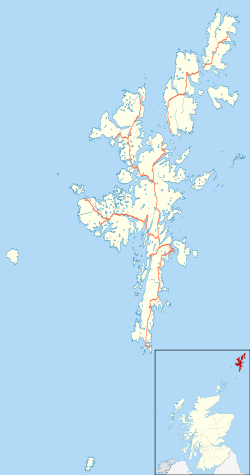Papa Stour Airstrip | |||||||||||
|---|---|---|---|---|---|---|---|---|---|---|---|
 | |||||||||||
| Summary | |||||||||||
| Airport type | Public | ||||||||||
| Owner | Shetland Islands Council | ||||||||||
| Serves | Papa Stour | ||||||||||
| Location | Papa Stour | ||||||||||
| Elevation AMSL | 75 ft / 23 m | ||||||||||
| Coordinates | 60°19′0″N001°42′0″W / 60.31667°N 1.70000°W | ||||||||||
| Map | |||||||||||
| Runways | |||||||||||
| |||||||||||
Papa Stour Airstrip is a small airstrip in the village of Biggings on the island of Papa Stour. Shetland, Scotland. [1]
